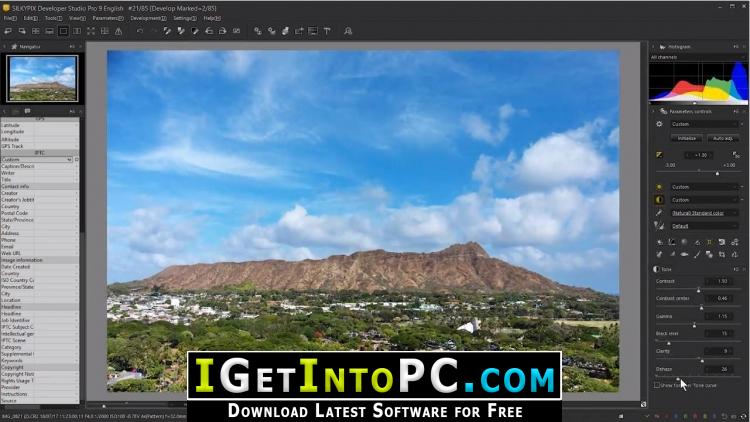
- SILKYPIX DEVELOPER STUDIO PRO 6 JPG PHOTOS HOW TO
- SILKYPIX DEVELOPER STUDIO PRO 6 JPG PHOTOS MANUAL
- SILKYPIX DEVELOPER STUDIO PRO 6 JPG PHOTOS SOFTWARE
- SILKYPIX DEVELOPER STUDIO PRO 6 JPG PHOTOS MAC
SILKYPIX DEVELOPER STUDIO PRO 6 JPG PHOTOS SOFTWARE
You can calibrate your camera, software and monitor to death so that the colors come out exactly as you want, but probably the person standing next to you doesn't see the exact same thing, what more a person half way across the world with a different computer, browser and monitor.Įven if you insist of shooting raw, you can always do the editing you need in the camera. I don't see how jpegs will be a limitation factor. You might be able to be creative with the colors. If you're a real hobbyist maybe you might want to consider getting film, there is way more than 12 bits levels of information there.Ģnd, I'm not really sure if you can really 'improve' the pictures that come out of the camera.
SILKYPIX DEVELOPER STUDIO PRO 6 JPG PHOTOS HOW TO
Maybe I would need to adjust Silkypix a bit more to get vibrant colours, but I suppose once you know how to it is just a matter of repeating the trick.Īfter checking the feature list of the different Silkypix versions, it becomes clear that the Pro 5 version has many more features as the 3 version that is the base of the light version packed with the camera.Ĭlick to expand.Unless you're being paid a few grand for each photoshoot you do, I don't see why any of this matters. I have calibrated my screen to make sure the colours come out as I would like to see them. There are also profiles for printers, screens etc. This way your are sure hat the resulting JPG or TIFF is optimized for the print. The profiles for photopaper will inform your program about the colour properties of the paper, maximum saturation etc.
SILKYPIX DEVELOPER STUDIO PRO 6 JPG PHOTOS MANUAL
Those 4 bits extra can give me the manual control to improve the picture just a bit more than the built-in JPG converter would do. I want to have the ability to process RAW files, after all a RAW file has 12 bits per pixel, a JPG just 8. On the other hand, just relying on the JPGs doesn't give me a good feeling. I am aware that the X-E1 has a very good internal RAW > JPG converter, and that is good to know.

Some folks here on this Forum have made some LR develop presets that try and give a Velvia "look" if you want that, you can just as easily do it in Photoshop using Actions - just Google for it. and of course the camera itself has film simulations built in, but only for JPG. Not sure about your question on loading profiles for Fuji photo paper - do you mean Fuji film? There are (expensive) programs that try and emulate Astia, Velvia, Provia, etc. The Adobe converters still seem to have some problems with foliage and fine details, but the colors are more vibrant than you typically get from Silkypix, without doing more work in trying to adjust Silkypix.Īpple's Aperture and Phase One Capture 1 are also generally reported to be good, I have used C1 7 Pro, but not Aperture.
SILKYPIX DEVELOPER STUDIO PRO 6 JPG PHOTOS MAC
LR4.4 and LR5 (and I assume the latest Photoshop Elements) can handle RAF files, but in my experience, the results are not as detailed as those produced by Silkypix, or AccuRaw, another worthwhile RAW file developer ($29 from the Apple App Store) if you are using a MAC platform.

I use it (with X-Pro1) using a preset "Taste" to batch develop RAF files then I do fine tuning of the TIFF files in Lightroom and Photoshop. That said, it still gives good results IMO with the X-Trans RAF files. The version of Silkypix that comes with the camera (I assume you are considering purchasing the XE-1 ?) called RFC-EX is based upon Silkypix 3, and it is now 2 generations old.


 0 kommentar(er)
0 kommentar(er)
